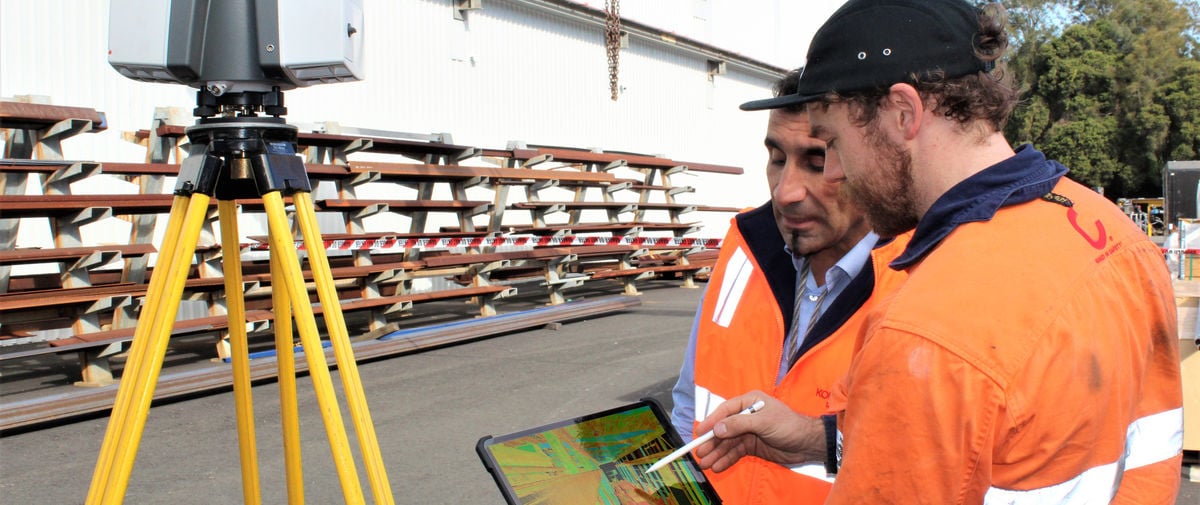Regular runway surveys can help identify issues before they lead to unplanned downtime
Crane runways and runway rail are sometimes thought of as static installations that don’t need to be inspected—but this could not be further from the truth. Over time, industrial runways and buildings experience changes from the stresses of day-to-day operations as well as the environment. Performing regular runway surveys can reveal issues associated with these changes. Having this critical information is a key factor in any successful preventive maintenance program and the owner’s bottom line.
Process crane owners have long been in search of a way to identify advanced runway issues before they become costly failures. The RailQ 3D Runway Survey can help solve this issue. The survey can be added to a periodic inspection program as the primary tool to find runway problems on process cranes before they lead to unplanned downtime and production stoppages.
Misaligned rails and runways cause crane skewing and tracking issues and can be the root cause of a variety of chronic crane headaches. These range from chronic bridge wheel flange wear, bridge wheel and guide roller bearing failures, and wheel and guide roller axle failures to motor overtemperatures and control component failures.
Undiagnosed misalignment between the rail and the runway girder’s web can cause cracks to develop in the runway girders or cause the girders to twist which can reduce its load carrying capacity. However, these failures often cost more than just the price of replacement components. Lost production or the inability to load critical cargo are usually more costly and are more heavily felt throughout an organization than the cost to repair a crane or runway.
Plan maintenance in advance using comparative data from RailQ 3D high-def measurements
RailQ 3D uses the latest high-definition surveying technology to measure the critical aspects of the runway system including: the runway rails alignment to one another, each rail’s alignment to its corresponding runway girder, camber in the runway girders, and wear in the rail head. These measurements are collected during the same survey and the data is analyzed by Konecranes runway engineers. Konecranes engineers review the data to recommend alignment strategies and highlight areas where critical safety issues are found.
Performing RailQ 3D as part of a periodic inspection program allows the results to be compared to past surveys. Areas of the runway with chronic issues can be identified signaling the need for a for long term engineered solution such as additional supports, tieback revisions or operator training. This approach allows the owner to plan maintenance far in advance and implement corrective actions during planned outages and production stoppages to limit the effects of lost production.
Consider environmental factors for an optimal time to perform runway survey
When adding RailQ 3D to a preventive maintenance program it is best to perform the survey annually for process-duty cranes. Ideally, the survey should be performed in the same month to limit seasonal environment effects on the structure. Variables such as roof snow loads, ground temperatures and internal building temperatures can affect the alignment of the runway rails. Due to these effects, adjustments should also be performed during similar environmental conditions to help ensure the effectiveness of results and recommendation.
RailQ 3D can help in planning modernizations or adding cranes on existing runways
In addition to being part of a periodic program, RailQ 3D is also recommended in these situations:
- If a crane has experienced or is planned to have a significant increase in usage or duty class
- Planning a modernization of the crane structure or driving machineries
- When planning to increase the lifting capacity of the crane(s)
- When a new runway or runway rail have recently been installed
- Before a new crane will be installed on an existing runway
- When an additional crane is being added to an existing runway
- Before and after an engineered or critical lift is performed
Performing RailQ 3D will shed light on how the crane and the runway work as a system. The data presented in the survey will be used to better define the scope of large-scale projects and reduce the chance of last-minute surprises that can cause delays or unplanned costs.
